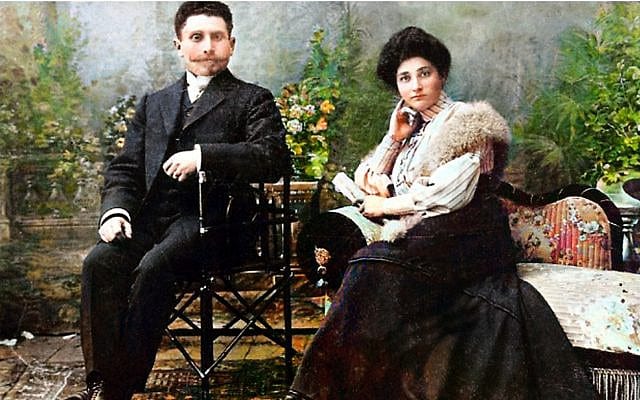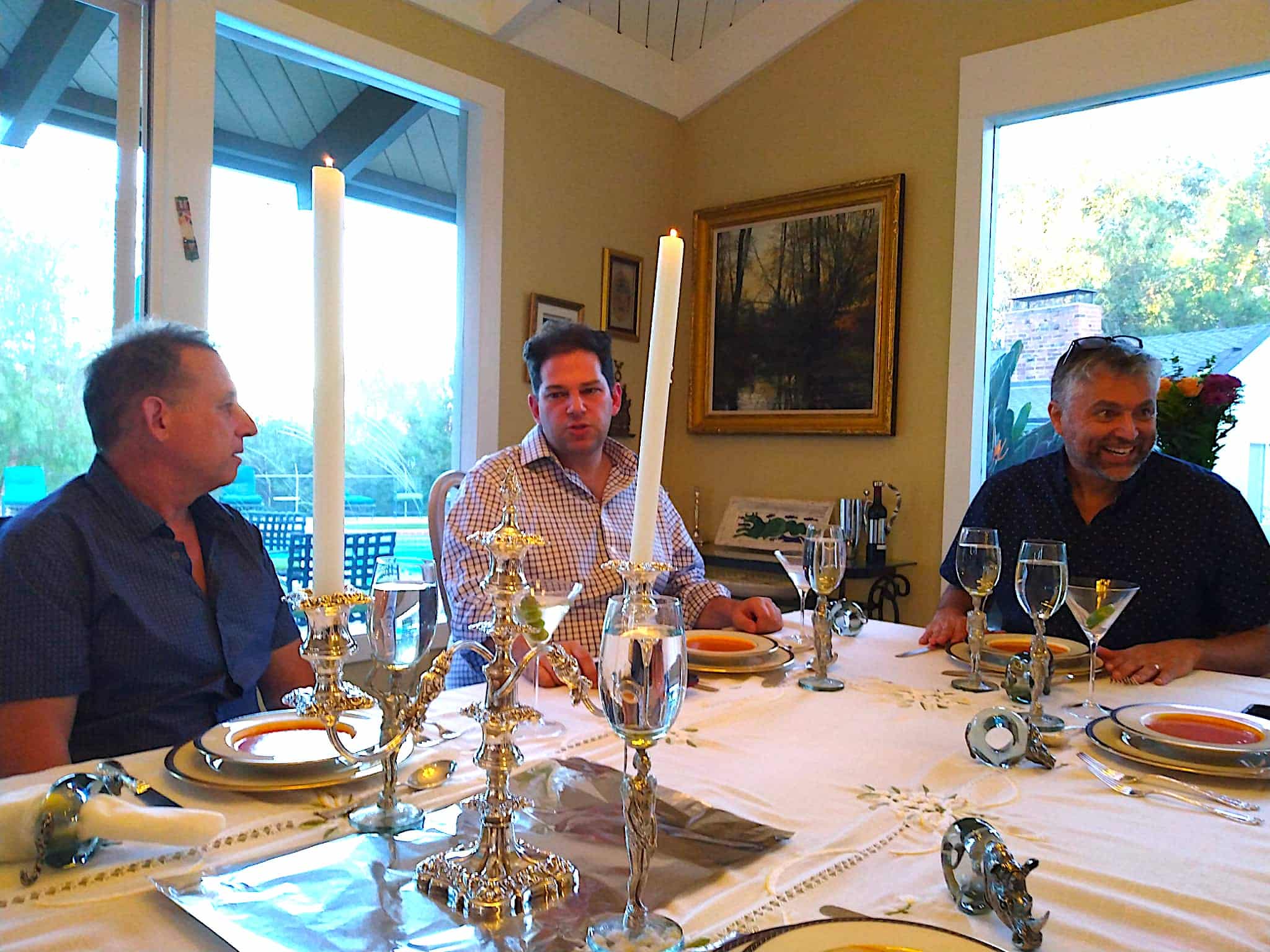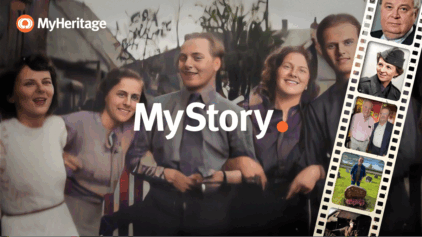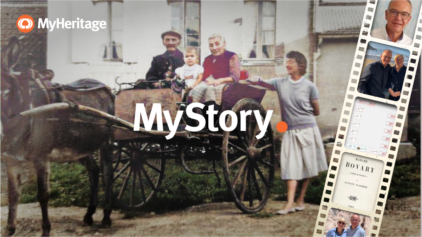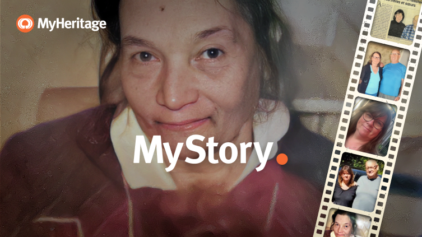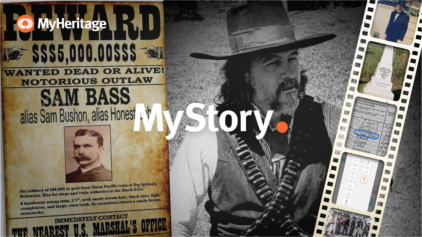107 Years Late for Dinner: How I Uncovered My Grandmother’s Lost Identity
- By Grant Arthur Gochin ·


The following post by MyHeritage user Grant Arthur Gochin, originally published in The Times of Israel Blogs, describes his remarkable journey to recover the lost identity of his grandmother, who was orphaned as the result of persecution. Republished with permission.
Dinner between cousins was scheduled for Shabbat on Friday, May 14, 1915. How was I to know that the Shabbos meal never took place? Without warning, Russian forces launched a genocidal mass deportation of Baltic Jews into the depths of Russia. Families were torn apart, lives were destroyed, and communities of Jews devastated.
The first inkling I had was on my grandmother’s deathbed. Her final lucid words to me were: “I wish I knew my name. I wish I knew who my family was.” We thought we knew her name – Bertha Lee Arenson. We were wrong.
My grandmother had been adopted. She had a genetic brother and maternal cousins. I knew her youth had been traumatic; nothing more. A deathbed plea for her own identity from a beloved grandmother is nothing a grandson can turn away from. The search for my grandmother’s identity became my life’s mission. It was the only act I could still perform on her behalf. There were clues to her real identity, but in a then-pre-internet age, they were not viable.
Throughout the years-long research, MyHeritage was critically important in tracing the family connections.
Uncertain country of origin
My grandmother had not known her country of birth. At times, she had claimed she was born in Latvia, Lithuania, Poland and even Russia.
After, I hired 6 different researchers in 5 different countries.
Her date of birth had been randomly imposed upon her, yet she remembered her mother’s first name had been Sirella, her father Jankel, and their last name approximated Novosedz. Novosedz just means “new settler” in Russian – it was not a hint of any value. I had little to work with.
The discovery of my grandmother’s identity was accidental, a series of random searches where the puzzle pieces fit. Sirella was the diminutive of Sire Elke.
Jankel was the abbreviation of Iankel Ber. Novosedz was Lithuanian. Bertha Lee was actually Brocha Leya. Her fictional date of birth, December 7, 1912, was actually July 10, 1911. My grandmother was Brocha Leya Novosedz, born in Birzai Lithuania, to Sire Elke Garrenbloom and Iankel Ber Novosedz. The Garrenblooms and Novosedz families were both well-established, prosperous families, living in Lithuania for hundreds of years. It was a good marriage!
Iankel, my great-grandfather, worked for Baron Von Fredrichshof on the Fredrichshof estate in Riga. Sirella’s family, the Garrenblooms, were a prosperous family in Raguva, Lithuania. The children were well cared for, education was primary.
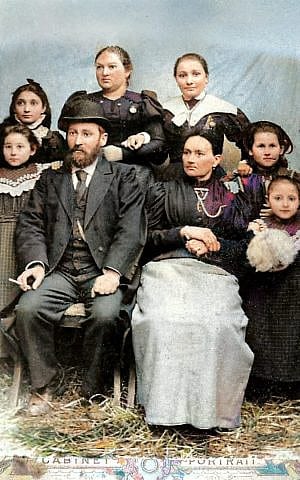
Moses and Esther Garrenbloom surrounded by their children, left to right: Luba, Sirella, Masha, Sarah, Braina, and Sonia. Note the gold watch Esther is wearing
Deportations
Jankel, Sirella, and all of their relatives were deported into Ukraine in a mass deportation of Jews from Lithuania and Latvia on Saturday, May 15, 1915. The Russian-instigated deportations were sudden and brutal. Immediately, and sometimes even before the Jews were forcibly removed from their homes, Lithuanians plundered their possessions. Ordinary people’s lives were utterly destroyed simply because they were Jews.
From being a wealthy successful family, they were placed on cattle cars and transported into the Russian hinterlands without food or means of survival. My grandmother was 4 years old. Her younger brother Moshe was two. Criminals indeed! The Shabbat dinner obviously never happened.
In Ukraine, Sirella, her sister Sonia, and their mother Esther sold candy at the roadside trying to eke out pennies to survive. Sonia (mother of the South African national hero Esther Barsel) swept the cemetery, begging for crumbs.
Pogroms and prison
These were the times of massive pogroms in Ukraine. Jews were forbidden from trading in grain. They were not allowed to possess food, they were not allowed to trade food, they were not supposed to remain alive. Jankel was thrown into prison for the crime of trying to feed his family. He was beaten and starved. He contracted typhoid in prison from the torturous and filthy conditions in which he and other Jews were held. On the very morning of his death, prison guards threw his almost lifeless body outside of the prison so they would not have to deal with yet one more dead Jew. He died that same day.
Pogroms against Jews in Ukraine were considered a “national good.” They were planned with the approval of local authorities. Often Jews would know their intended date of murder and rape. They were helpless against the hordes and officials that sought their eradication.
Sirella died of deprivation and illness while Jankel was imprisoned. Brocha and Moshe were made orphans, fending for themselves, living with their Aunt Sonia and their grandmother Esther. They were exhausted, starved, and persecuted. How could children understand that they were made orphans just because they were born Jewish?
Sonia and Esther took the children and relocated to Kharkov where Sonia met and married a Ukrainian Jew, Joseph Levin.
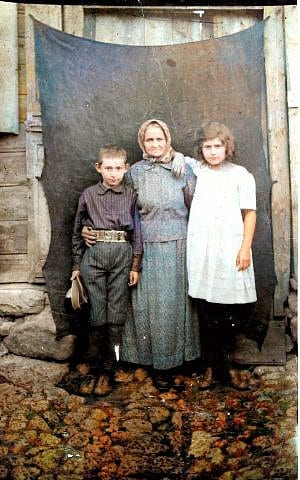
Esther Garrenbloom with her grandson Moshe (Morris) and granddaughter Brocha (Photo taken in Ukraine, c. 1919)
Holodomor
Stalin and Lenin imposed their first Holodomor on Ukraine in 1922. There was no intention that disposed Jews should survive. Sonia and the children somehow made their way back to Lithuania in hopes of survival. There is no trace of Esther.
Officials in the newly independent Lithuania cared just as much for Jewish wellbeing as Stalin. The newly created Lithuanian government tried to prevent the return of Jews. Nonetheless, Sonia and her wards reached Raguva to live in the old Garrenbloom home.
Sirella’s siblings Sarah, John, and Abraham had previously emigrated to South Africa. Sonia reached out to Sarah. She told her that she could no longer care for their sister’s children, and to send rescue.
Rescue
Sarah’s husband, Abraham Arenson, was dispatched to Lithuania to collect the children. This was simultaneous with the Ochberg Orphan rescues (the rescue of Jewish orphans from the Ukrainian pogroms who would otherwise have starved to death).
When the Novosedz family was deported in 1915, a Lithuanian friend entered their home in Birzai and removed Esther’s gold watch (see the photo above), and some silver serving pieces. They held these few remnants in safekeeping on the slim hope the Novosedz family would survive.
While Lithuanian officials did not want Jewish children inside Lithuania, they also did not want Jewish children to survive anywhere else. Abraham had to smuggle the children out of Lithuania. Along with the children, he packed Esther’s gold watch and chain, and the silver saved from the Novosedz home. Abraham stated that when he found the children in Lithuania, they were starving, wearing only rags, and were living on the streets.
South Africa
Abraham brought the children to the safe haven of South Africa. Abraham and Sarah transformed my grandmother, Brocha Leya Novosedz, into Bertha (Bee) Lee Arenson. Her relationship to the Garrenbloom family remained. The Garrenblooms knew nothing of Sirella’s husband’s family, Novosedz. That connection was destroyed. The Arenson family was poor. At age 14, Brocha was removed from school and sent out to work. Russians and Lithuanians had ensured her life opportunities were taken from her.
Traumatic memories
Brocha and her brother Moshe’s memories were so horrific that they psychologically blocked them out. Their adoptive parents tried to protect them by reinventing their identity. All memories of Lithuania and Lithuanians were so traumatizing that Sarah and Abraham forbade Lithuania from ever being mentioned in the home (PTSD was unknown at that time). It was only on my grandmother’s deathbed that she referred to her past for the first time. When she expressed her terminal losses, I was simply unable to not try to discover her identity.
There had been Novosedz survivors from the 1915 deportations, but they too were murdered by Lithuanians during the Holocaust. No Jews were intended to survive in Lithuania, they were supposed to be completely eliminated, and so the ethnic cleansing by Lithuanians was almost total. Just 0.04% of Lithuanians rescued Jews during the Holocaust, a miniscule number. The only reason any Jews survived in Lithuania was because Lithuanians hadn’t reached them yet. Had my grandmother not been smuggled out of Lithuania as an orphaned child, Lithuanians would have murdered her also.
Cemeteries ransacked
For decades I searched for clues. The Garrenblooms had been from Raguva, the cemetery in Raguva Lithuania should have offered clues. After WWII, Lithuanians dug up the cemetery in Raguva looking for gold fillings on “rich Jewish skeletons.” They stole the Jewish gravestones for use as building materials. Thus, there were no clues coming from the dead.
It was an accidental search that led to the discovery of my grandmother’s birth record and began to unravel the mystery of her descent. The Novosedz family was a storied family from Birzai, Lithuania with a traceable history back to the 1700s. Even before the arrival of Nazis into Birzai, Lithuanians chopped off the heads of rabbis and displayed them in storefronts for the entertainment of the local population. Lithuanians raped Jewish girls, and murdered Jewish families, leaving only scraps for Nazis to finish off. Lithuanians ended the known survival of the Lithuanian Novosedz family.
Upon her death, my grandmother entrusted to me with her grandmother Esther’s gold chain and watch. She gave me the napkin rings and cutlery taken from her childhood family home in Birzai.
Through MyHeritage DNA testing, I found a Novodesz cousin — Cantor Daniel Singer of Stephen Wise Free Synagogue in New York. His Novosedz family came to America before Lithuanians, Russians and Nazis seriously began to murder Jews.
On July 10, 2022, Daniel Singer and I met in person. Two Novosedz cousins breaking bread on Shabbat, 107 years and 7 weeks late for dinner. We used the cutlery last used by the Novosedz family in Birzai in 1915. The table décor included the Novosedz napkin rings. The candles in the candelabra were given to Brocha as a wedding gift by Sirella’s sister, Sarah. July 10, the day of our reunion, is both Daniel’s birthday and my grandmother’s Brocha Leya Novosedz birthday. It is also Daniel’s grandfather William’s birthday.
Despite the annihilationist efforts of Lithuanians, Nazis, and Russians to eliminate all Jews, two remnants of the Novosedz family remain alive to represent our Jewish people. Today, Lithuania celebrates the murderers of our Jewish families as their national heroes. A simple dinner between myself and Daniel proves they did not have a total victory. 3.6% of us survived and have gone on to bring incredible benefit to the world.

Brocha Leya Novosedz became Bertha Lee Arenson who became Bee Smollan. Born July 10, 1911 in Birzai, Lithuania.
My grandmother has her name back. Her family is now known. I have given her back some of what was so brutally taken from her. Dinner is ready. There is life and joy and family at our Shabbat table. They tried to murder all of us. Lithuanians and Nazis did not win. Let the Shabbat dinner begin.
Are you eager to explore your Lithuanian roots? The MyHeritage Wiki is a great starting point! Be sure to start with Lithuanian surnames.
 Grant Arthur Gochin serves as the Honorary Consul for the Republic of Togo, and as Vice Dean of the Los Angeles Consular Corps, the second largest Consular Corps in the world. In March 2018, he was appointed as the Special Envoy for Diaspora Affairs for the African Union, which represents the 55 African nations. Gochin is actively involved in Jewish affairs, focusing on historical justice. He has spent the past thirty years documenting and restoring signs of Jewish life in Lithuania. He has served as the Chair of the Maceva Project in Lithuania, which mapped, inventoried, documented and restored over 50 abandoned and neglected Jewish cemeteries. Gochin is the author of the book Malice, Murder and Manipulation (2013) which documents his family history of oppression in Lithuania. He is presently working on a project to expose the current Holocaust revisionism within the Lithuanian government, and he is Chief of the Village of Babade in Togo, an honor granted for his philanthropic work. Professionally, Gochin is a Certified Financial Planner and practices as a Wealth Advisor in California, where he lives with his family.
Grant Arthur Gochin serves as the Honorary Consul for the Republic of Togo, and as Vice Dean of the Los Angeles Consular Corps, the second largest Consular Corps in the world. In March 2018, he was appointed as the Special Envoy for Diaspora Affairs for the African Union, which represents the 55 African nations. Gochin is actively involved in Jewish affairs, focusing on historical justice. He has spent the past thirty years documenting and restoring signs of Jewish life in Lithuania. He has served as the Chair of the Maceva Project in Lithuania, which mapped, inventoried, documented and restored over 50 abandoned and neglected Jewish cemeteries. Gochin is the author of the book Malice, Murder and Manipulation (2013) which documents his family history of oppression in Lithuania. He is presently working on a project to expose the current Holocaust revisionism within the Lithuanian government, and he is Chief of the Village of Babade in Togo, an honor granted for his philanthropic work. Professionally, Gochin is a Certified Financial Planner and practices as a Wealth Advisor in California, where he lives with his family.

